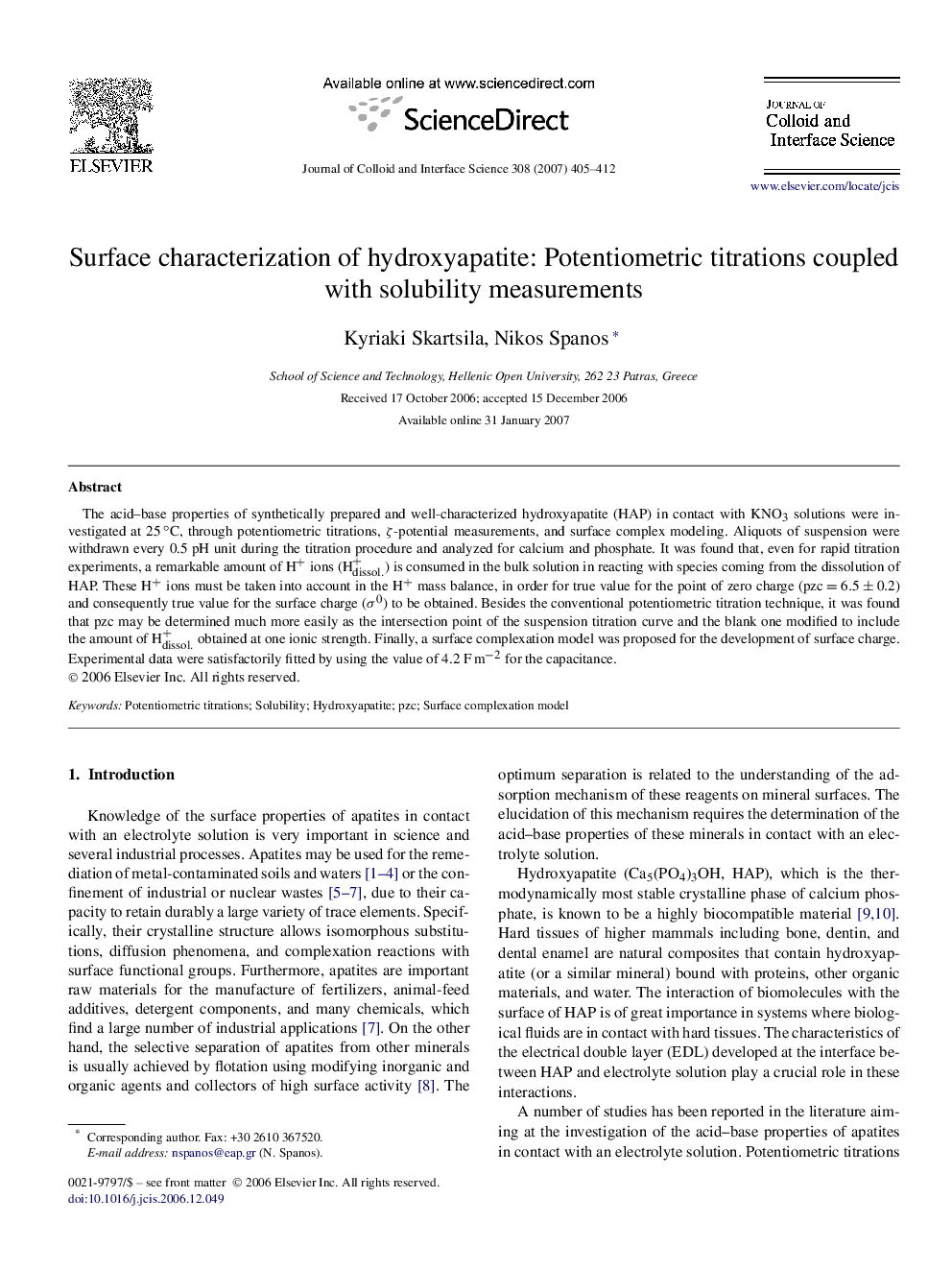| Article ID | Journal | Published Year | Pages | File Type |
|---|---|---|---|---|
| 613046 | Journal of Colloid and Interface Science | 2007 | 8 Pages |
The acid–base properties of synthetically prepared and well-characterized hydroxyapatite (HAP) in contact with KNO3 solutions were investigated at 25 °C, through potentiometric titrations, ζ-potential measurements, and surface complex modeling. Aliquots of suspension were withdrawn every 0.5 pH unit during the titration procedure and analyzed for calcium and phosphate. It was found that, even for rapid titration experiments, a remarkable amount of H+ ions (H+dissol.) is consumed in the bulk solution in reacting with species coming from the dissolution of HAP. These H+ ions must be taken into account in the H+ mass balance, in order for true value for the point of zero charge (pzc=6.5±0.2pzc=6.5±0.2) and consequently true value for the surface charge (σ0σ0) to be obtained. Besides the conventional potentiometric titration technique, it was found that pzc may be determined much more easily as the intersection point of the suspension titration curve and the blank one modified to include the amount of H+dissol. obtained at one ionic strength. Finally, a surface complexation model was proposed for the development of surface charge. Experimental data were satisfactorily fitted by using the value of 4.2 F m−2 for the capacitance.
Graphical abstractFigure optionsDownload full-size imageDownload as PowerPoint slide
